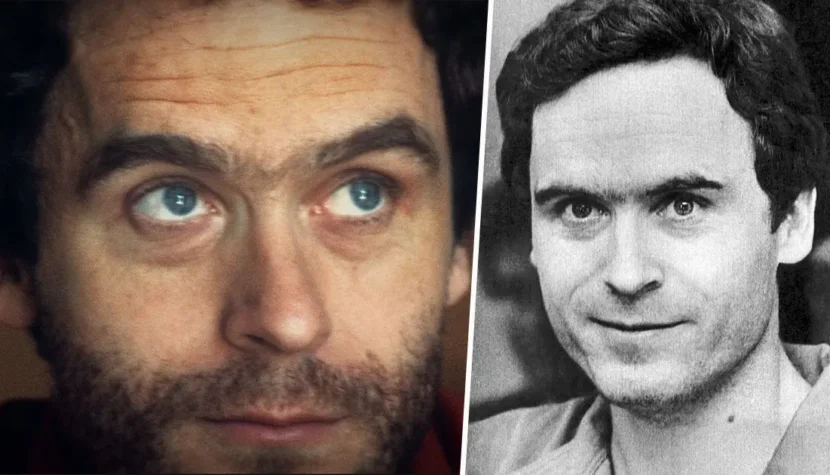Conversations with a Killer: The Ted Bundy Tapes: A Serial Killer in the Netflix Documentary

Karen Sparks likely had many plans for the newly begun year of 1974. It’s possible that as she went to bed on January 3, she was thinking with enthusiasm about the upcoming months at the University of Washington and honing her dancing skills. The eighteen-year-old could never have imagined that she would wake up only after ten days, never again being the same person. Shortly after midnight, an intruder crept into her bedroom, struck her with a metal rod with such force that it knocked her unconscious, then raped her—possibly using the same rod—and left her, forever altering her life. His name was Theodore Robert Bundy. A serial killer. A kidnapper. A rapist. A necrophile.
The case of Karen Sparks—one of the few survivors—marked the beginning of Bundy’s macabre, systematic activities across the United States, which lasted four years and spanned six states (it’s possible he had killed before, as early as the age of 14). The murderer’s victims were exclusively young women, all of whom shared a similar appearance. Bundy would brazenly attack his victims, either striking up conversations with them in public places or—like in the case of Sparks—breaking into their dorm rooms, where, come morning, other students would find blood-stained sheets and pillows instead of a sleeping friend. The search for Bundy involved police officers, journalists, and the FBI. When the killer was finally captured and charged, he denied all accusations for a long time—only beginning to speak (and confess) when faced with the prospect of the electric chair. Dozens of hours of his confessions were recorded on cassette tapes. These recordings became the foundation for Netflix’s documentary, which, in four hours of footage, examines Bundy’s character and his crimes.

The narrative jumps between different dates, providing insight into Bundy’s history both before his killing spree and during the manhunt and police operations. Testimonies from those connected to Bundy’s case at the time are interwoven with archival photographs and footage showing crime scenes, statements from public figures, and—most chillingly—audio and video recordings of Bundy himself.
These segments are particularly effective when contrasted with the accounts of people who knew Bundy personally and don’t hold back from commenting on how handsome, intelligent, and charismatic he was. In archival footage, the camera follows Bundy as he walks through the hallways of jails and courtrooms in police escort, showing no remorse and behaving more like a celebrated celebrity. From today’s perspective, knowing the heinous acts Bundy committed, his behavior is equally fascinating and repulsive (you can see the satisfaction in his eyes as others describe his crimes). Yet, at the time—before he was proven guilty—he could just as easily have been seen as an optimistic, charismatic conversationalist, which indeed contributed to his brief status as a media phenomenon.
The documentary’s creators, as they navigate the timeline of Bundy’s life, dwell longer on the critical moments: the murders themselves (showing their connection to Bundy’s past) and the events following his arrest. The story is mainly told from the perspectives of investigators and those who were close to Bundy at the time (including recordings of interviews with his former partner and his mother). Police officers and journalists describe Bundy’s preferred methods of killing and paint a terrifying portrait of him, while sparing the audience the most brutal details—which can be found in other sources (for example, Bundy’s necrophilia is only briefly mentioned, though he was known to copulate with corpses until they decomposed—a chilling example of his desecration). The use of Bundy’s own recordings as the backdrop for the narrative is a masterstroke, creating the illusion of watching a fictional film in the vein of David Fincher’s excellent Zodiac (2007), especially as the footage is of outstanding quality and perfectly complements the accounts of those interviewed.

This illusion makes Bundy’s story increasingly gripping as we delve deeper into his history, hearing about his successive murders and watching as he gradually loses control of the situation—ultimately leading to his execution. The cruel, real-life script is filled with twists and turns that would rival those of any fictional thriller, and the filmmakers skillfully present these shifts, keeping the audience on edge. The culmination of the story comes during Bundy’s trials, meticulously detailed in the final, longest episode of the series. It’s a courtroom drama full of absurdities, surprises, and suspense, even if you already know how it ends.
The documentary frequently discusses Bundy’s aforementioned charm, though the production never glorifies him (unlike his… fans, who spoke during his trials, declaring they didn’t believe in his guilt—a fact that must have fed his ego). Emphasizing how charming he was helps reconstruct the stories of how he lured his victims, who were deceived by his appearance and apparent politeness. Placing oneself in their shoes and imagining how a seemingly kind man could suddenly transform into a murder-hungry monster is profoundly unsettling—especially when paired with the chilling interview conducted with one of Bundy’s would-be victims for the documentary. You see his piercing, clear eyes and suddenly realize that your life is hurtling toward a brutal end. Detailed descriptions of the killing process aren’t necessary; your imagination fills in the blanks—a testament to the success of Conversations with a Killer. Bundy confessed to killing 30 women. There may have been many more.
Joe Berlinger, the director of the documentary, also adapted Bundy’s story into a feature film titled Extremely Wicked, Shockingly Evil and Vile (a phrase taken from the judge’s final statement), with Zac Efron playing the role of the murderer. I suspect both the documentary and the film have driven people to delve deeper into the history of Ted Bundy—a story that, while devilishly fascinating, is ultimately one of extraordinary cruelty and a grim reminder of the depths to which humanity can sink.

